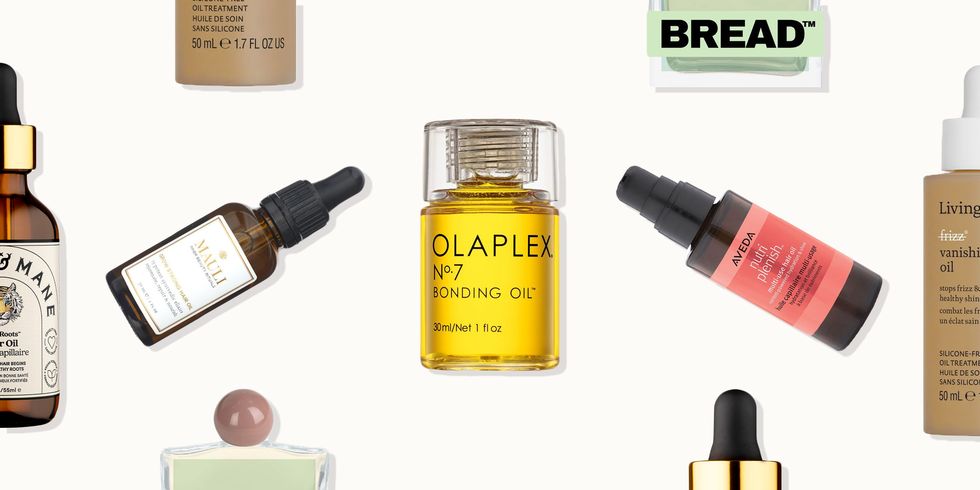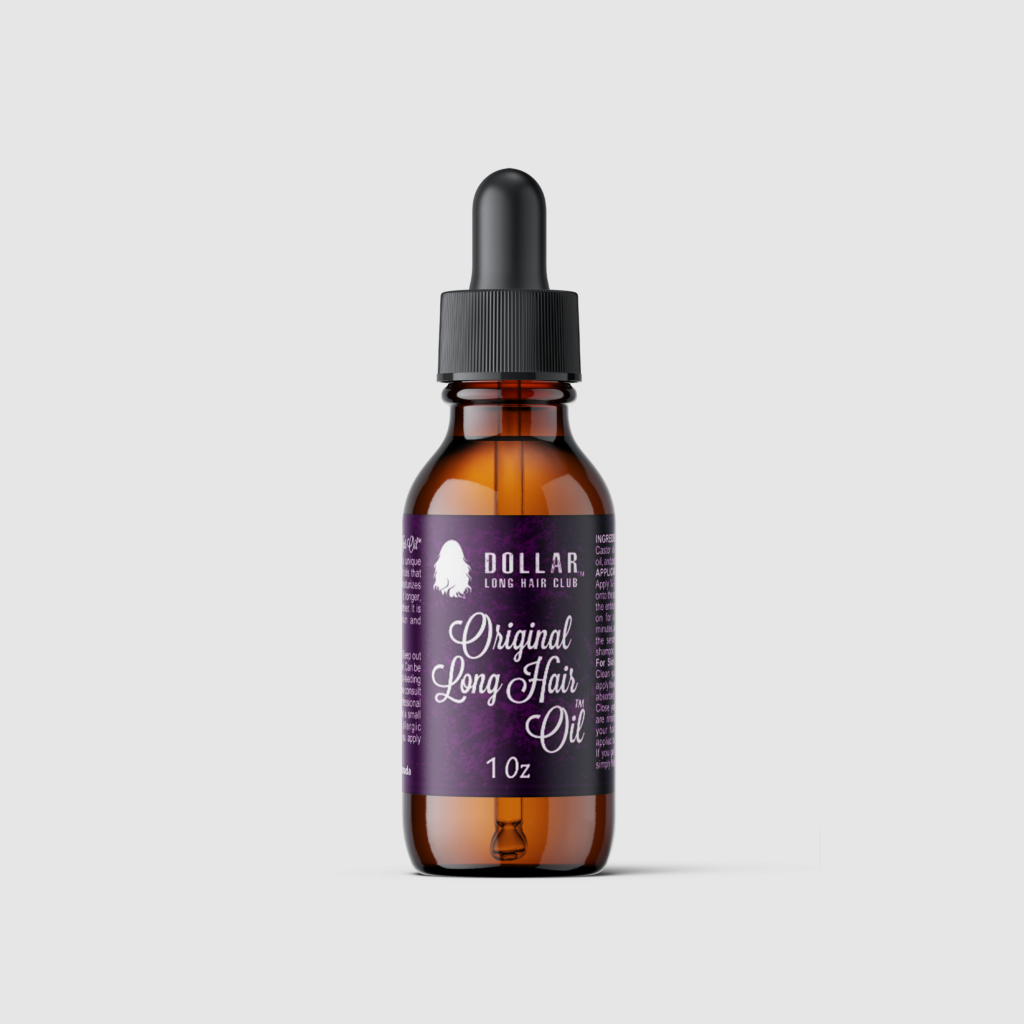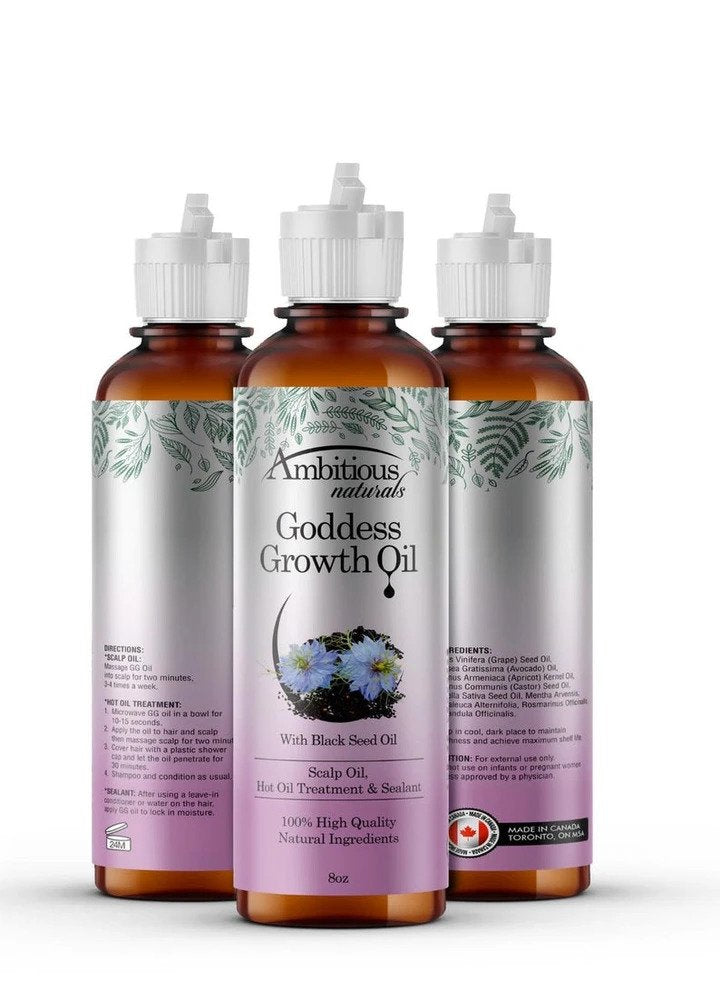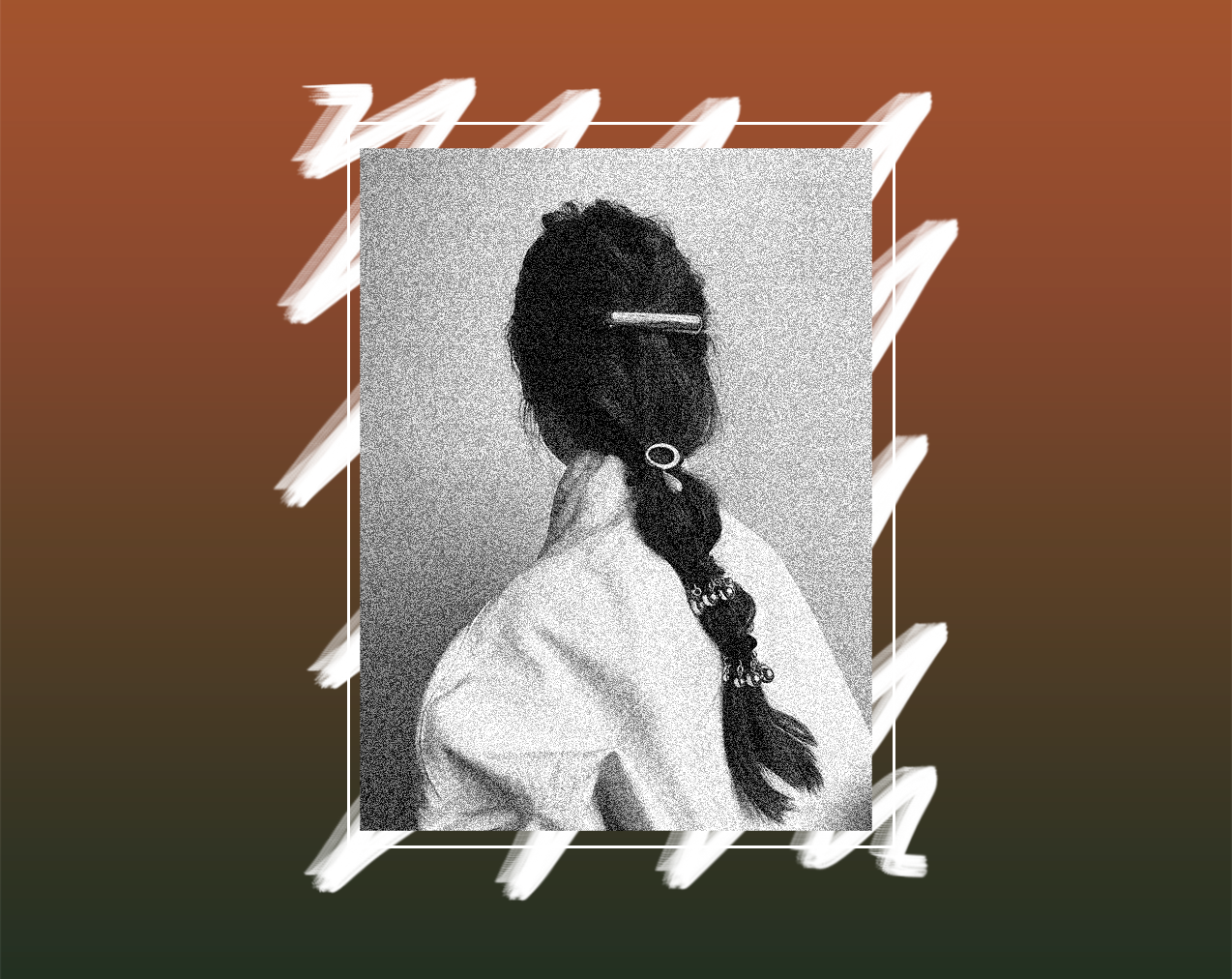GRAPHIC DESIGNER: Safa Kubti
At the height of the pandemic, Google searches for “hair oil” spiked by 127 per cent.
In the beauty world, no hair care routine is complete without some use of oil. In fact, according to trend reports, the global hair oil market is projected to reach USD $3.9 billion by 2024, registering a compound annual growth rate of 4.78 per cent during the forecast period.
Brands like OUAI, Gisou and Olaplex have dominated the hair market with high-priced products.
But where does the practice of hair oiling come from?

Hair oiling has been a part of hair care routines in several cultures. Dating back all the way to Ancient India, the centuries-old Indian science of Ayurveda involves hair oiling as one of its wellness methods.
According to Mourab Maraby, CEO of Canadian hair care company Mira Herbals, an effective hair oiling technique involves sectioning the hair into four parts.
“Start from the back of the head and then [begin] moving forward in small circular movements like a massage…You want to apply the oil on the scalp, never on the hair,” he said.
The oil should be applied to every part of the scalp and then oil residue that may be left on the hands can be brushed through the hair for extra shine.
In traditional Ayurvedic texts, sesame oil is used in the winter and coconut oil is recommended in the warmer months for their respective warming and cooling effects.
Maraby recommends the oil sits in the hair for at least 30 minutes before washing it out, but if possible, leaving it in overnight will produce the best results.
Oiling hair prevents or reduces dandruff, tames frizzy hair and can stop hair loss and encourage hair growth.
Apart from the cosmetic benefits, Maraby also notes that Ayurvedic medicine is all about spirituality and that oiling hair can have spiritual benefits.
“It does have a spiritual component to it as well. It’s a crown chakra when you’re massaging at the top of the head. [It’s believed] to give you peace and also before bed you will sleep better.”

“Especially for hair oil its not just for beauty, there’s a spiritual bonding aspect to it. So you have to make sure that you recognize where it comes from.”
According to Ayurveda College, Dr. Marc Halpern notes that the knowledge of Ayurveda has its roots in the Vedas, the sacred texts of India from which many spiritual philosophies and religions have emerged. Ayurveda is not just a science of the physical body, but dives into the understanding of consciousness itself.
While yoga, chakras, and hair oiling have all become popular activities, techniques and practices in the western world, Maraby said that true recognition of its origins and creations is extremely important.
“I believe one should immerse themselves in the cultural aspect of it. Especially for hair oil its not just for beauty, there’s a spiritual bonding aspect to it. So you have to make sure that you recognize where it comes from.”
But hair oiling isn’t native to just one part of the world. It was also commonly used in Ancient Egypt and is a popular product for hair care in the Black community.

Jaicyea Smith, the owner of Oshun’s Beauty, a consignment store for Black beauty products locally made in Canada, said hair oiling is a fundamental part of hair care for Black people.
“[Black hair] tends to [have] kinky or thick curls so the hair dries quicker…so we have to make sure we oil our hair.”
Smith said that oil is typically applied to the hair after a conditioner or treatment for the best results. While usually used for hydration, oil can also be used to finish a hairstyle for added shine.
When it comes to the type of oil used, Smith said that while people usually go for what’s trending such as coconut oil or argan oil, she feels those oils don’t work for her hair texture as they aren’t as thick.
She said, “Castor oils are really good. Jojoba oil is also really good in the hair. I feel like coconut oil needs some other supplement.”
Castor oil is a nutrient-rich vegetable oil made from castor beans. Originating in tropical east Africa, it is popular in India and the West Indies for cosmetic purposes such as hair treatments.
According to an article from Elle, the fatty acids in castor oil provide proteins and nutrients to the hair follicles and also prevent follicle inflammation. The oil is also known to improve gloss and shine in the hair.
In addition, Smith noted that shea butter is useful for dry hair and peppermint oil can be great for a scalp treatment.
“We need to make sure that we’re honouring the original creators of these things because we see that happen a lot where there’s a mass appropriation of things that come from Black cultures.”
While hair oil has been used traditionally in different cultures for centuries, it’s gained popularity through social media and big brands have started selling the products in mainstream stores.
For example, Olaplex oils are being sold for $38 in stores like Sephora and Nordstrom as well as Gisou’s Honey Infused Hair Oil, which retails for $60.
For comparison, at Oshun’s Beauty, the Ambitious Naturals Goddess Growth Oil is a scalp and hair oil made from mainly grapeseed oil and castor oil and is sold for $10.
“Hair oil is for everybody. But when it comes to Black hair moving away from mainstream products [is important] because they are catering to the norm, or the status quo, which is not the norm for us,” Smith said, “So it’s not that Black people can’t use those products. It’s the majority of us need specific products for hair.”
She added that she thinks it’s important to give credit where it’s due and recognize where certain beauty techniques and practices come from.
“We need to make sure that we’re honouring the original creators of these things because we see that happen a lot where there’s a mass appropriation of things that come from Black cultures. It’s really important to just honour that whether it’s through the branding or how we’re selling and talking about it.”
Maraby echoed a similar sentiment and said, “If you appreciate where it [hair oiling] comes from, you understand why it’s important to [practice those techniques] in the way it’s done.”
While hair oiling continues to gain popularity and trend on social media, knowing its origins and understanding that it’s not a “new phenomenon” is necessary to become fully immersed in the experience.

























